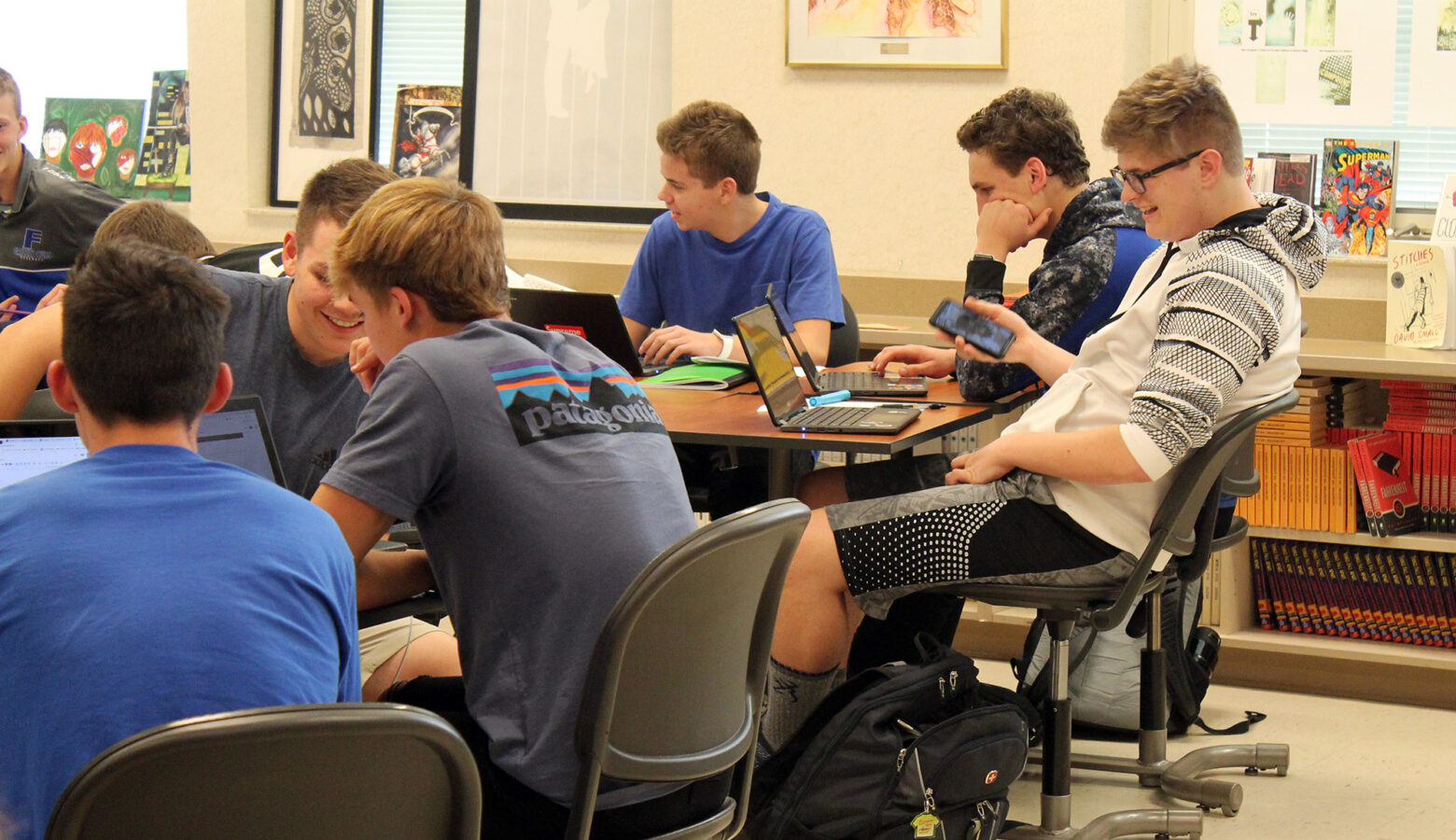Indiana Chamber, others ask lawmakers to help the state’s under-educated workforce

Many Indiana workers will miss out on high-quality jobs because they lack education. If that isn’t addressed, experts and advocates say, Indiana’s workforce could get left behind other states as the pace of digital development and automation speed up.
Indiana ranks 35th for the number of first-time enrollments in any kind of post-secondary education per capita and 37th for the percentage with any kind of degree or certificate, according to federal data.
Indiana Chamber of Commerce CEO and President Kevin Brinegar said the problem starts with young Hoosiers falling behind in reading and math.
“We all need to redouble our efforts if Indiana is going to be as competitive as it could possibly be in an increasingly knowledge-based economy,” he said.
The state’s low reading and math proficiency in standardized tests are “somewhere between alarming and depressing,” said Chamber Vice-President Jason Bearce.
Indiana’s 2021-22 IREAD assessment results suggest about 1 in 5 Hoosier children haven’t mastered foundational reading skills by the third grade.
In a press conference Tuesday, Indiana Chamber leaders joined a chorus of voices asking lawmakers to address the state’s “leaking talent pipeline” in the 2023 session.
“The system” produces worse outcomes for Black and Hispanic students, Brinegar said.
People with at least a bachelor’s degree are less likely to be unemployed and more likely to participate in the state’s workforce, according to state data the Chamber’s leadership pointed to in a report earlier this month.
“There’s sort of some wishful thinking and in some circles that, ‘well, students might not be going on to some sort of higher education, but they’re going to go into work,” Bearce said. “Labor participation rates for students today who aren’t going on to post-secondary are on [the] decline. So they’re not working. They’re not going to school and, long term, they’re not employable.”
The state’s labor market is currently so tight that there are about twice as many job openings as job seekers, federal estimates show.
Join the conversation and sign up for the Indiana Two-Way. Text “Indiana” to 73224. Your comments and questions in response to our weekly text help us find the answers you need on statewide issues and throughout the legislative session.
The Chamber argues the state needs to “concentrate our policy focus and state resources on improving the educational outcomes and skills of those at the bottom end of the educational attainment scale.”
Bearce also recommends more state investment in “high-quality early learning” to make child care more affordable for Hoosier families. That includes making more families eligible for state vouchers that help cover child care costs.
“You could argue it’s a broken system, it’s very costly. On a good day, child care providers barely break even,” he said. “The wages for the workers we have are pretty depressed, which makes it difficult to keep child care workers, we think that the funding mechanism should account for that whenever possible, and [incentivize] child care providers to increase their workers wages and … raise their education and skill level.”
Chamber leadership also said the state should consolidate low-population school districts to improve outcomes. It wants the legislature to require high schoolers fill out the federal Free Application For Student Aid (FAFSA) after a bill to do so was rolled back in the 2022 session.
And they also want the state to boost participation in its 21st Century Scholars program. Less than 40 percent of eligible low-income students enroll in the program, they note, and of those less than half complete the preparatory activities necessary to get the scholarship which can cover up to four years of full tuition.
Even if students do go to college and graduate, many don’t stay and work in the state after getting their degree. Only 29 percent of Hoosier 18-year-olds finish college and stay in Indiana, according to an analysis by Ball State economist Michael Hicks. The Chamber recommends state lawmakers invest in programs that incentivize post-grads to stick around.
These recommendations are very much in line with some of the suggestions submitted to the legislature by the Governor’s Workforce Cabinet earlier this month.
For example, the cabinet recommended automatically enrolling all eligible students in the 21st Century Scholars program rather than making them apply. They also recommended adjusting state funding for colleges and universities based on how many of their students stay and work in Indiana after graduation.
“Most of those recommendations are extraordinarily low cost and should be done as a matter of modest policy adjustment,” said Michael Hicks, a Ball State economist . “But it misses the big problem … we’re spending less today in inflation-adjusted terms on educating children and young adults than we have at any point in 30 or 40 years.”
Hicks said high school graduation requirements have been softened so much that diplomas are “worthless.”
“We’re well behind advanced states in the share that have bachelor’s degrees or higher,” he said.
Hicks said the problem won’t be solved unless the legislature recognizes “we have a deficit here. We’re gonna have to raise taxes, spend more money on this and do this more efficiently.”
Brinegar favors “strategic investments” using Indiana’s existing surplus funds.
“My thought would be we need to take more of an incremental approach. But with a great sense of urgency,” he said.
Though, Brinegar said he’d need more specific information about any plan to increase taxes and spending on education before he could respond to it.
Contact reporter Adam at [email protected] or follow him on Twitter at @arayesIPB.


